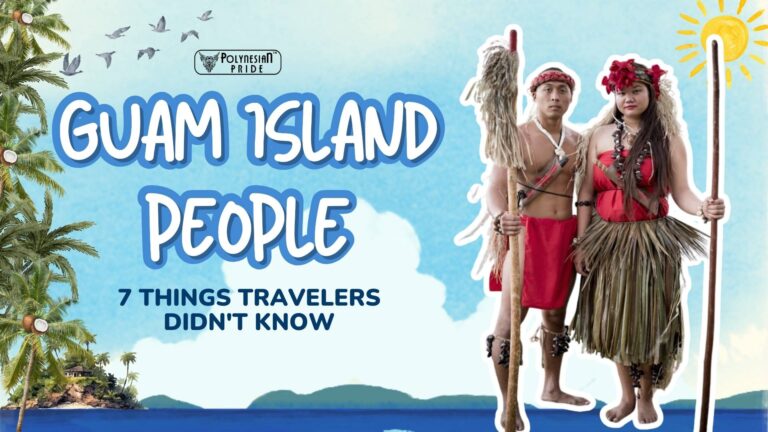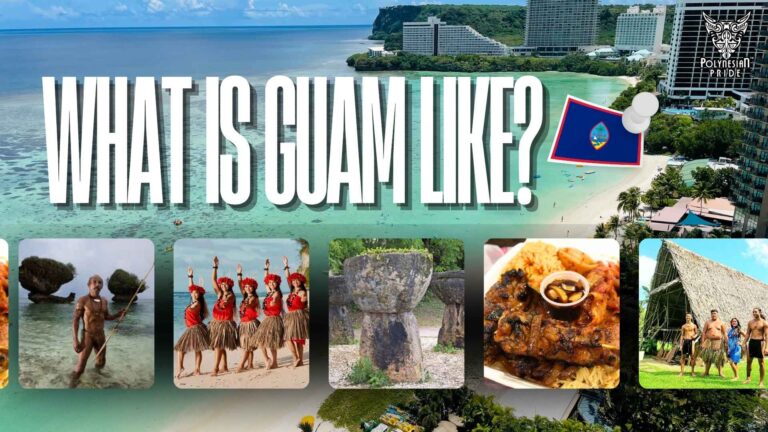Papua New Guinea: Guidance To Exploring An Ancient Land

INTRODUCTION
Welcome to Papua New Guinea! Nestled in the southwestern Pacific Ocean, this fascinating country is a treasure trove of cultural diversity, natural beauty, and rich history. Whether you’re an intrepid traveler seeking adventure or a curious learner wanting to know more, Papua New Guinea offers an intriguing glimpse into a world where tradition and modernity coexist harmoniously.
Geography Features
The Map Of Papua New Guinea
Papua New Guinea stretches from just south of the Equator to the Torres Strait, separating it from Australia’s Cape York Peninsula. The mainland reaches its maximum north-south expanse of about 510 miles (820 km) along its western border with Indonesian Papua. This border is primarily defined by the 141° E longitude, curving slightly to follow the Fly River for around 50 miles (80 km) near Kiunga.
From the western border, the land narrows, with the Gulf of Papua creating a substantial southern indentation. This finger-like shape points southeast toward the D’Entrecasteaux Islands and the Louisiade Archipelago. Off the mainland, Papua New Guinea includes numerous small islands and island groups to the north and east. Notably, Bougainville Island and the Bismarck Archipelago, which arcs from the Admiralty Islands in the north to New Britain and Umboi Island near the Huon Peninsula, are part of Papua New Guinea’s diverse geography.

Biggest Cities
Papua New Guinea’s largest cities are crucial cultural, commercial, and connectivity centers.
Port Moresby: The capital and largest city, Port Moresby, located on the southeastern coast, is the political and economic heart of the country, known for its bustling harbor and diverse population.
Lae: the second-largest city, lies on the northeastern coast and is a significant industrial and agricultural center, benefiting from its strategic location near the Markham Valley and the Highlands.
Mount Hagen: situated in the Western Highlands, is a vital trading hub for the region’s agricultural produce.
Madang: is another significant northern coastal city renowned for its scenic beauty and vibrant cultural festivals.
These cities are essential to the development and modernization of Papua New Guinea, each contributing uniquely to the country’s dynamic landscape.

Papua New Guinea has 600 Different Tribes
Papua New Guinea is a land of incredible cultural diversity, home to over 600 distinct tribes, each with its own unique customs, languages, and traditions. This rich tapestry of cultures in Papua New Guinea makes it one of the most fascinating places in the world for anthropologists, travelers, and anyone interested in human societies.
Among these numerous tribes, a few stand out for their unique cultural practices and notable contributions to Papua New Guinea’s identity.
Most Famous Tribes in Papua New Guinea
The Baining People: Cultural Practices and Art
The Baining people, residing in the East New Britain Province, are famous for their spectacular fire dance ceremonies. These nocturnal rituals involve elaborate masks and costumes made from bark cloth, symbolizing the spirits of the forest. The dancers perform barefoot over glowing embers, showcasing their spiritual connection and resilience. This tradition is a profound expression of the Baining people’s beliefs and artistic heritage.
Chambri Tribe: Life by the Lake
The Chambri Tribe lives around the Chambri Lakes in the East Sepik Province. They are renowned for their intricate wood carvings and woven artifacts, often depicting animals and mythical beings. These artistic creations are not just decorative but also serve as important cultural symbols, representing the tribe’s connection to their environment and ancestral spirits.

The Asaro Tribe: Legend of the Mudmen
The Asaro Tribe, from the Eastern Highlands Province, is best known for their eerie Mudmen performances. According to legend, the Asaro people once used their frightening clay masks and bodies coated in mud to terrify and defeat their enemies. Today, these performances are a significant cultural event, with the Mudmen appearing at various festivals, including the famous Goroka Show. Their unique appearance and haunting performances are a major draw for visitors.
The Huli Tribe: Warriors of the Highlands
The Huli Tribe, residing in the Hela Province, is easily recognized by their elaborate wigs and face paint. Known as fierce warriors, the Huli have a rich tradition of warfare and horticulture. They practice a unique form of body decoration, using bright yellow and red ochre, which plays a crucial role in their identity and social status. The Huli’s elaborate headdresses, made from human hair and adorned with feathers and flowers, are a symbol of masculinity and bravery.

The Orokaiva Tribe: Cultural Heritage and Conflict
The Orokaiva people, from the Oro Province, have a history marked by both cultural richness and conflict. The women of the Orokaiva tribe in Oro Province are renowned for their intricate facial tattoos, which mark their transition to womanhood at around 18 years old. This traditional process, carried out by female elders over several months using thorns and natural ink from charcoal and water, signifies readiness for marriage.
Additionally, Orokaiva women are skilled in creating beautiful tapa cloths from mulberry tree bark, dyed with natural plant and flower extracts, showcasing their rich cultural heritage and artistic prowess.
Flora and Fauna
The Flora
Rainforests: Papua New Guinea’s rainforests are among the most biodiverse globally, housing towering trees like the kauri and various tropical hardwoods. They are rich in orchids and epiphytes, contributing significantly to the country’s botanical diversity.
Montane Forests: In the highlands, cooler temperatures characterize montane forests and support a unique range of vegetation, including mosses, ferns, and alpine plants adapted to higher altitudes.
Coastal and Mangrove Vegetation: Coastal areas feature mangrove forests that play crucial roles in coastal protection, providing habitat for marine life and supporting fisheries, highlighting their ecological importance.

The Fauna
Birdlife
Papua New Guinea hosts over 700 bird species, including the renowned Birds of Paradise, known for their elaborate plumage and complex courtship displays. The country’s avian diversity is a draw for birdwatchers globally.
Mammals
Unique mammalian species include tree kangaroos endemic to the rainforests, cuscuses, and diverse bat species. Marine mammals like dolphins and dugongs are also found in coastal waters, contributing to the country’s rich faunal diversity.
Marine Life
Papua New Guinea lies within the Coral Triangle, known worldwide for its extraordinary marine biodiversity. This region boasts pristine coral reefs teeming with over 600 coral species and 3,000 reef fish species. It is also home to diverse marine life, including fisheries, tuna, sharks, and other aquatic species, highlighting its rich and varied marine environment.

Weather and Climate
Papua New Guinea is in an equatorial zone with a diverse topography and varied climate patterns. Coastal regions experience a tropical rainforest climate, characterized by high humidity and consistent rainfall year-round, with temperatures ranging from 25°C to 32°C (77°F to 90°F).
In contrast, higher altitude areas like Mount Hagen and Goroka feature cooler temperatures, particularly at night. The country observes a distinct wet season from December to March, marked by heavy rainfall and occasional tropical storms, followed by a dry season from May to October, offering clearer skies and lower humidity.
These climatic variations influence agriculture and biodiversity across different regions, supporting Papua New Guinea’s rich ecological diversity from rainforests to marine ecosystems. To make the most of your adventure, learn about the best time to visit Papua New Guinea so you can plan around the weather and seasonal highlights.
Papua New Guinea Overview Of History
Early Settlement and European Contact
Papua New Guinea’s history is deeply rooted in its prehistoric origins and centuries of European exploration and colonization. Human habitation dates back to around 7000 BCE, with early agricultural practices established by local communities. European contact began with Portuguese sightings in 1511, followed by the first recorded landing around 1526-1527.
European Colonization and Division
In 1793, the British founded the first European colony in the region. Subsequently, the Dutch claimed the western half in 1828, incorporating it into the Dutch East Indies. By 1884, Britain had annexed the southeastern part, while Germany controlled the northeastern sector. After World War I, Australia assumed administration of both territories, collectively known as the Papua and New Guinea Territory.
Independence and Nationhood
Independence dawned in 1975 when Papua New Guinea became a sovereign nation within the British Commonwealth. This event marked a pivotal moment in its history, signaling a shift towards self-governance despite ongoing challenges, including internal conflicts such as the Bougainville crisis. A peace agreement in 2001 paved the way for Bougainville’s autonomy within Papua New Guinea in 2005, underscoring the nation’s journey toward stability and sovereignty.

Culture of Papua New Guinea
What is Papua New Guinea known for? It boasts a diverse and vibrant cultural tapestry shaped by its rich history and varied tribal communities. The country is home to over 800 distinct languages, each contributing to its unique cultural heritage. Traditional customs and rituals play a significant role in daily life, reflecting deep-rooted beliefs and practices passed down through generations.
Cultural Diversity and Traditions
The cultural diversity of Papua New Guinea is exemplified by its myriad tribal groups, each with distinct languages, art forms, and ceremonial practices. Traditional dances, such as the iconic singing, showcase elaborate costumes adorned with feathers, shells, and body paint, celebrating themes of ancestry, spirituality, and communal identity.
Art and Crafts
Artisanal crafts in Papua New Guinea encompass many forms, including intricate wood carvings, pottery, and woven artifacts. These artistic expressions often carry symbolic meanings tied to ancestral lore and spiritual beliefs, making them aesthetically appealing and culturally significant.
Culinary Traditions
Papua New Guinean cuisine reflects its cultural diversity and natural abundance. Staple foods include sago, taro, sweet potatoes, and tropical fruits, supplemented by fresh seafood and game meats. Traditional cooking methods, such as earth ovens and bamboo steamers, preserve authentic flavors and textures integral to local culinary traditions.

Festivals and Celebrations
Goroka Show
Throughout the year, Papua New Guinea hosts vibrant cultural festivals highlighting its diverse traditions and rituals. Events like the Goroka Show held annually in September, unite over 100 tribes nationwide. Participants display traditional songs, dances, and ritual performances while wearing extraordinary and colorful tribal dresses. This event fosters cultural exchange and unity among historically diverse and isolated tribes.
Asaro’ Mudmen’
The Asaro’ Mudmen’ from the Eastern Highlands Province are known for their distinctive mud-coated skin and eerie clay masks adorned with pigs’ teeth and shells. This tradition, originating from the Asaro tribe, symbolizes ancestral spirits and has spread to other tribes for commercial purposes.
The Baining Fire Dance
The Baining Fire Dance, performed by adolescent males of the Baining tribe in New Britain, is a spectacular ritual involving massive animal-head headdresses. Participants bravely run through and kick fires, creating showers of sparks amidst chanting and singing by village elders, marking a significant rite of passage for the community.

Must-Visit Attractions
Adventure Tourism
Papua New Guinea offers diverse adventure tourism opportunities, including diving, river cruising, and exploring World War 2-themed sites like the historic Kokoda Track. Cultural enthusiasts can enjoy annual events such as the Goroka Show and traditional festivals, showcasing Papua New Guinea’s rich heritage amidst stunning natural landscapes.
Port Moresby
As the capital city, Port Moresby combines modern amenities with cultural attractions. Visit the National Museum and Art Gallery for a comprehensive overview of Papua’s cultural and natural history. Other notable sites include the Port Moresby Nature Park, home to native wildlife, and Ela Beach, a popular spot for relaxation and swimming.
Local Markets
Exploring local markets in Papua New Guinea offers a vibrant and authentic experience. In Port Moresby, highlights include the Boroko Craft Market and Ela Beach Craft Market, where you can find hand-carved masks, jewelry, and bilums. Outside the capital, the Kokopo Market is known for its fresh fruits and vegetables from rich volcanic soils and various souvenirs. At the same time, the Mt Hagen Market features fresh produce and colorful bilums. Prioritize safety by checking with your hotel or host before visiting specific markets, especially in Port Moresby and the Highlands.
Kokoda Trail
The Kokoda Trail is a historic 96-kilometer trek through the Owen Stanley Range. It holds significant WWII history, being the site of fierce battles between Japanese and Allied forces. Today, it attracts hikers and history enthusiasts, offering challenging terrain and breathtaking scenery.
Trobriand Islands
Known for their unique social structures and matrilineal societies, the Trobriand Islands, also called the “Islands of Love,” offer a glimpse into a distinct way of life. Visitors can enjoy pristine beaches, traditional yam festivals, and cricket matches, a blend of sport and ritual.
Sepik River
The Sepik River, one of the largest river systems in Papua New Guinea, is famed for its cultural richness. A cruise along the river reveals traditional villages, intricate wood carvings, and vibrant ceremonies. The Sepik region is also known for its spirit houses, or “haus tambaran,” which are central to community life.

Activities and Experiences
Diving and Snorkeling
The world recognizes Papua New Guinea as a premier diving and snorkeling destination. Key sites such as Kimbe Bay, Milne Bay, and the historic wrecks around Rabaul offer pristine coral reefs, abundant marine life, and fascinating shipwrecks, making it a paradise for underwater enthusiasts.
Trekking and Hiking
Trekking and hiking in Papua New Guinea offer a unique blend of adventure and cultural immersion. Iconic trails like the Kokoda Trail, Black Cat Track, and Mount Wilhelm ascent provide breathtaking landscapes and historical significance. Proper preparation, including physical fitness and appropriate gear, is essential for a safe and rewarding journey through dense rainforests, mountain vistas, and traditional villages.

Bird Watching
Papua New Guinea boasts over 700 bird species, including the renowned birds of paradise, making it a haven for bird watchers. Varirata National Park near Port Moresby and the Tari Basin in the Southern Highlands are well known for their rich avian diversity and stunning natural settings, which are ideal for birding enthusiasts.
Cultural Festivals
Attending cultural festivals in Papua New Guinea offers a vibrant immersion into the country’s diverse heritage. The annual Goroka Show, held in September, features traditional dances, music, and elaborate tribal attire. Similarly, the Mount Hagen Cultural Show celebrates the Western Highlands’ cultural richness through captivating performances and ceremonial displays.
Travel Tips In Papua New Guinea
Accommodation
Accommodation choices in Papua New Guinea cater to various preferences, from luxurious resorts and international hotels in major cities like Port Moresby and Lae to eco-friendly lodges and charming guesthouses in rural areas. For a more immersive experience, village homestays offer a unique chance to engage directly with local hospitality and cultural traditions.
Transport
Navigating Papua New Guinea beyond urban centers can pose challenges due to limited infrastructure. Travelers can rely on domestic flights operated by Air Niugini and Papua New Guinea Air, linking Port Moresby with vital regional hubs such as Lae, Madang, and Mount Hagen. Local buses, taxis, and boats provide alternative transportation options for shorter journeys, each offering a unique adventure.
Packing Essentials
When planning a trip to Papua New Guinea, consider its tropical climate and varied landscapes. Pack lightweight, breathable clothing for humid conditions, sturdy hiking boots for rugged terrain, effective insect repellent, high SPF sunscreen, and a basic first-aid kit. Carrying necessary medications is crucial due to limited access to pharmacies in remote areas.
The Best Time to Visit Papua New Guinea
The optimal period to visit Papua New Guinea is from May to October, characterized by pleasant temperatures, clear skies, and reduced humidity. This timeframe experiences minimal rainfall, with average daily temperatures typically hovering in the low 30s Celsius.

CONCLUSION
Papua New Guinea is a land of incredible diversity and contrasts, where ancient traditions coexist with modern advancements. From its breathtaking landscapes and rich biodiversity to its vibrant cultures and resilient people, Papua New Guinea offers a unique and enriching experience for those who can explore its many facets. As the country continues to navigate the challenges and opportunities of the 21st century, its commitment to preserving its heritage while embracing progress will undoubtedly shape its future in remarkable ways.
FAQs
What is the official language of Papua New Guinea?
People in Papua New Guinea officially speak Tok Pisin, English, and Hiri Motu. While the government and educational institutions use English, Tok Pisin is a widely spoken lingua franca nationwide.
How many ethnic groups are there in Papua New Guinea?
Papua New Guinea has over 800 distinct ethnic groups, each with its language, culture, and traditions. This incredible diversity makes it one of the most culturally rich countries in the world.
What are some must-visit places in Papua New Guinea?
Some must-visit places in Papua New Guinea include the Kokoda Track, Varirata National Park, the Sepik River, and Kimbe Bay. These destinations offer natural beauty, cultural experiences, and adventure opportunities.
Is Papua New Guinea safe for tourists?
While Papua New Guinea has safe tourist areas, it is essential to be aware of local conditions and take necessary precautions. We advise travelers to stay informed about the regions they plan to visit and follow travel advisories from their home countries.

I am Leilani Miller – I research focusing on Vanuatu – volcanic landscapes, blue holes, coral reefs & rainforests. I have over five years of experience researching and sharing insights on tourism and environmental activism. Explore and experience without limits through my latest article.
Contact information:
Email: [email protected]
Tel: +1 (808) 555-1528






